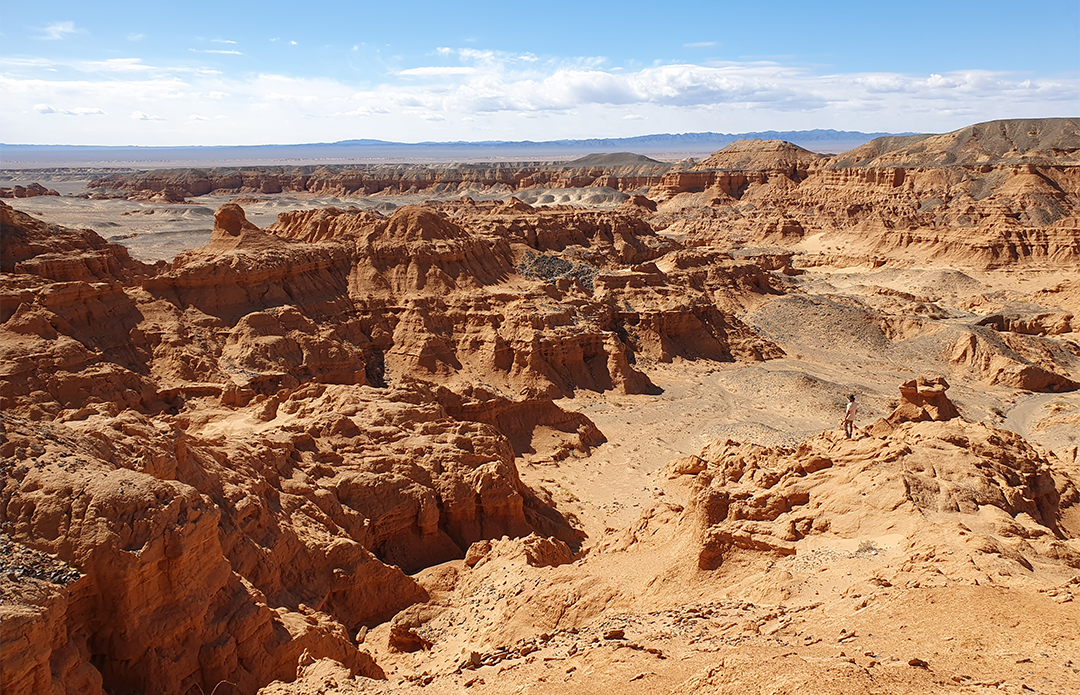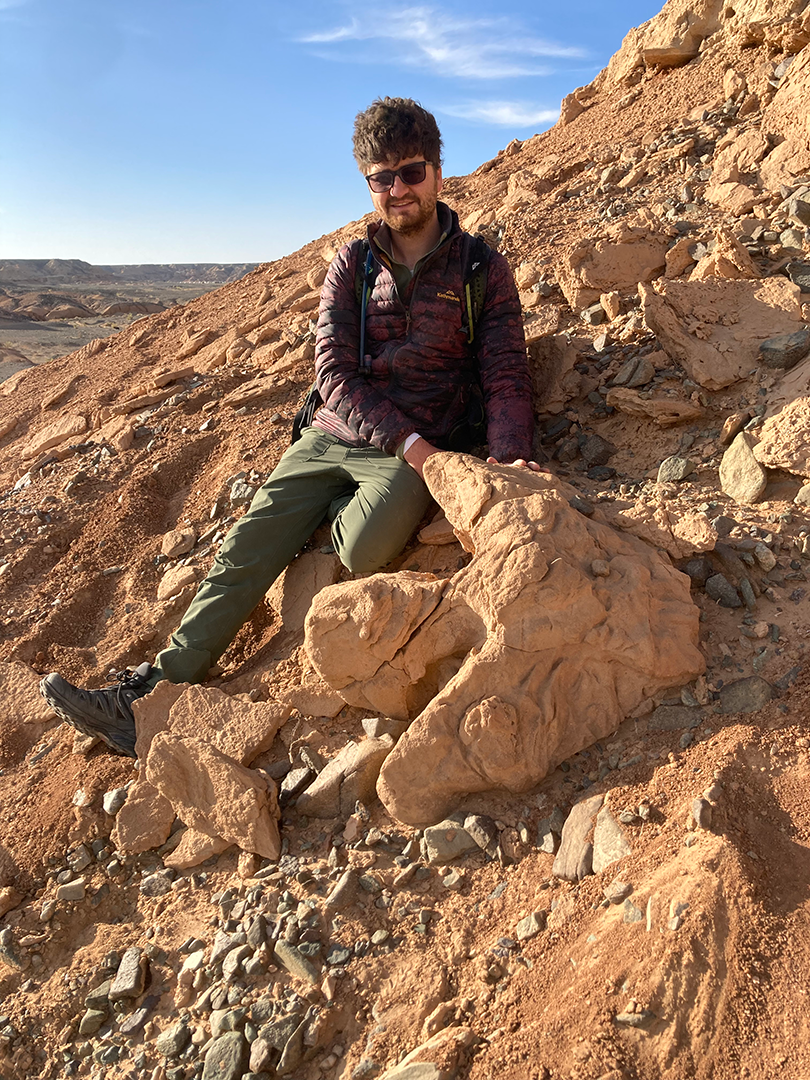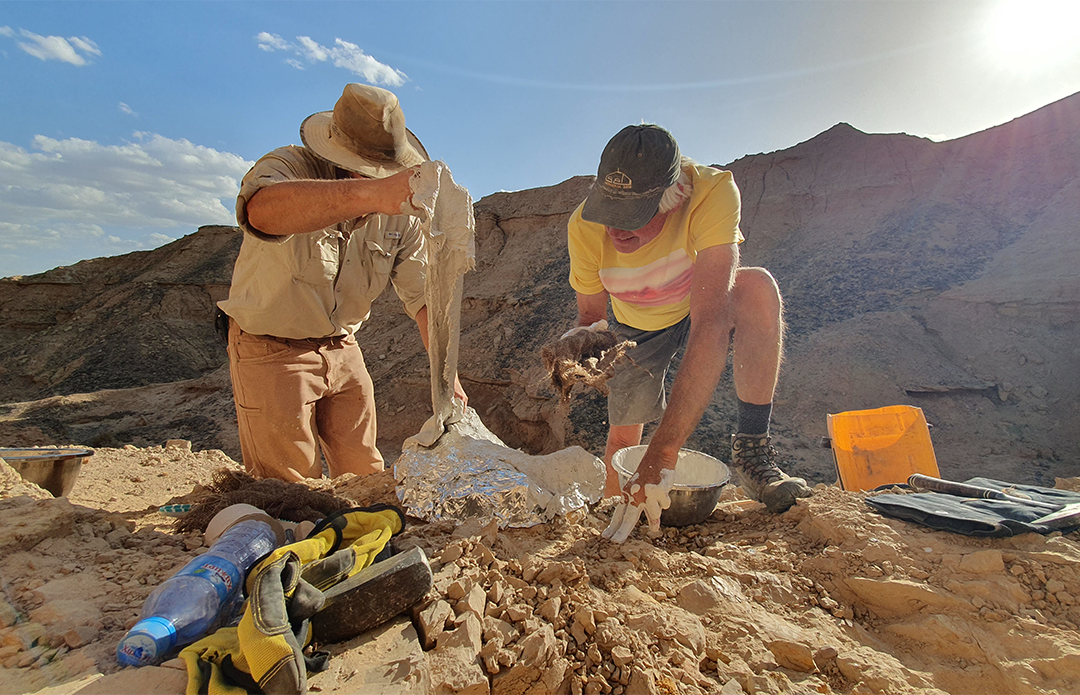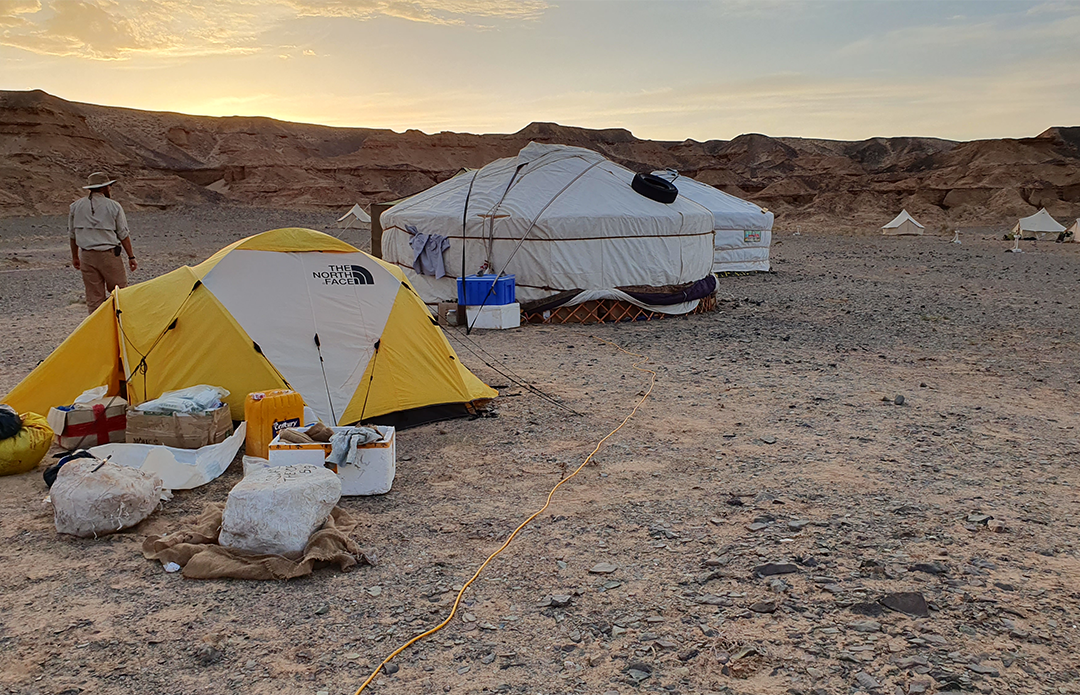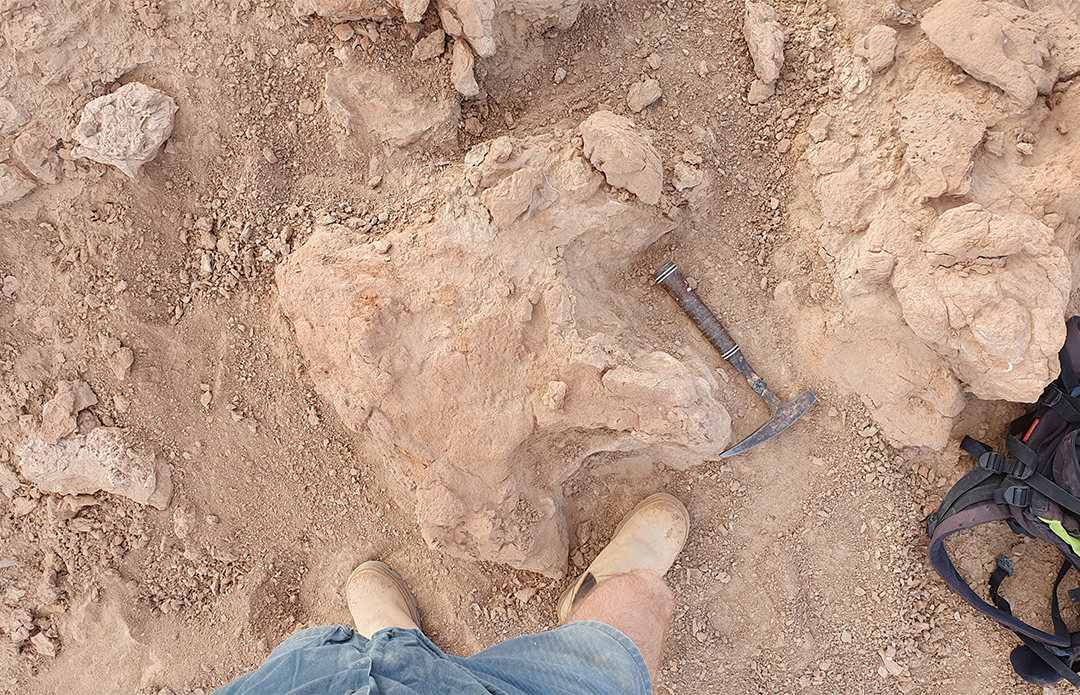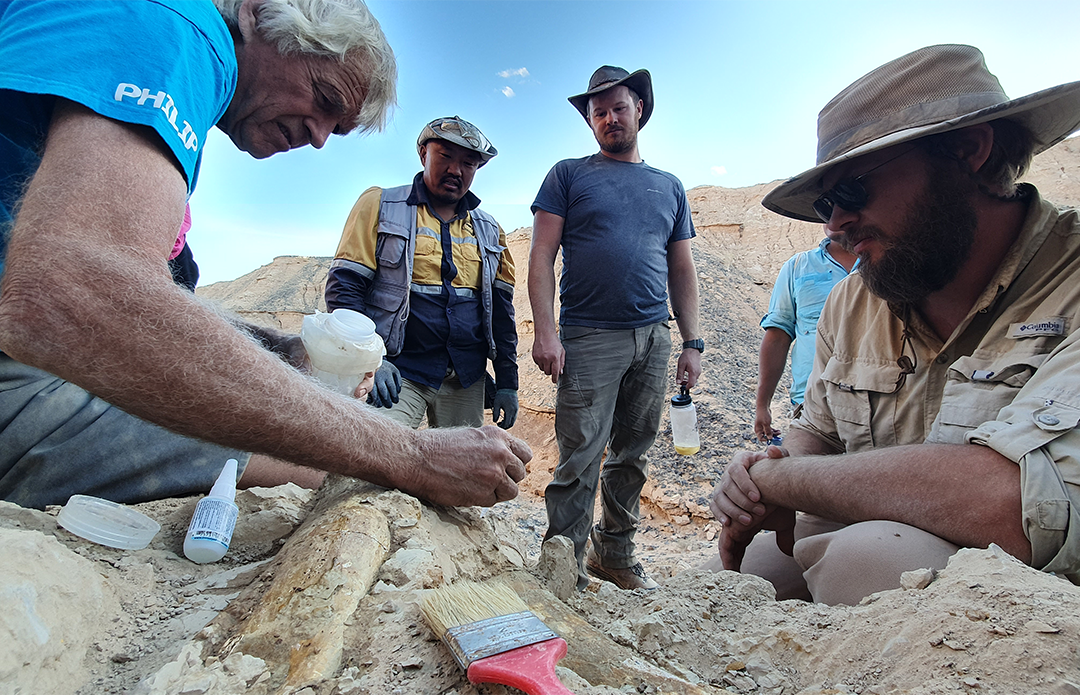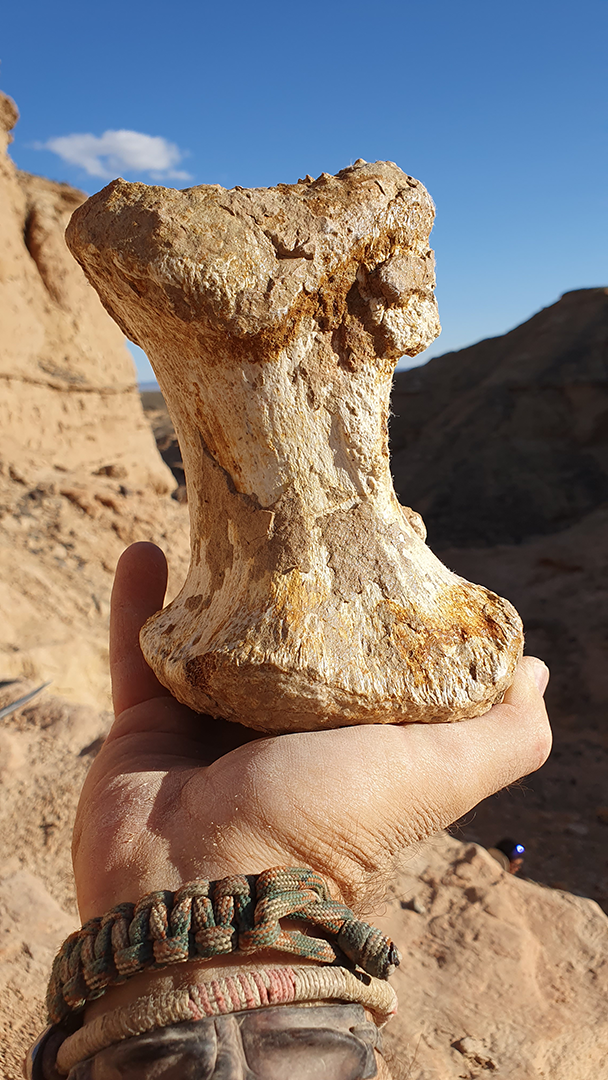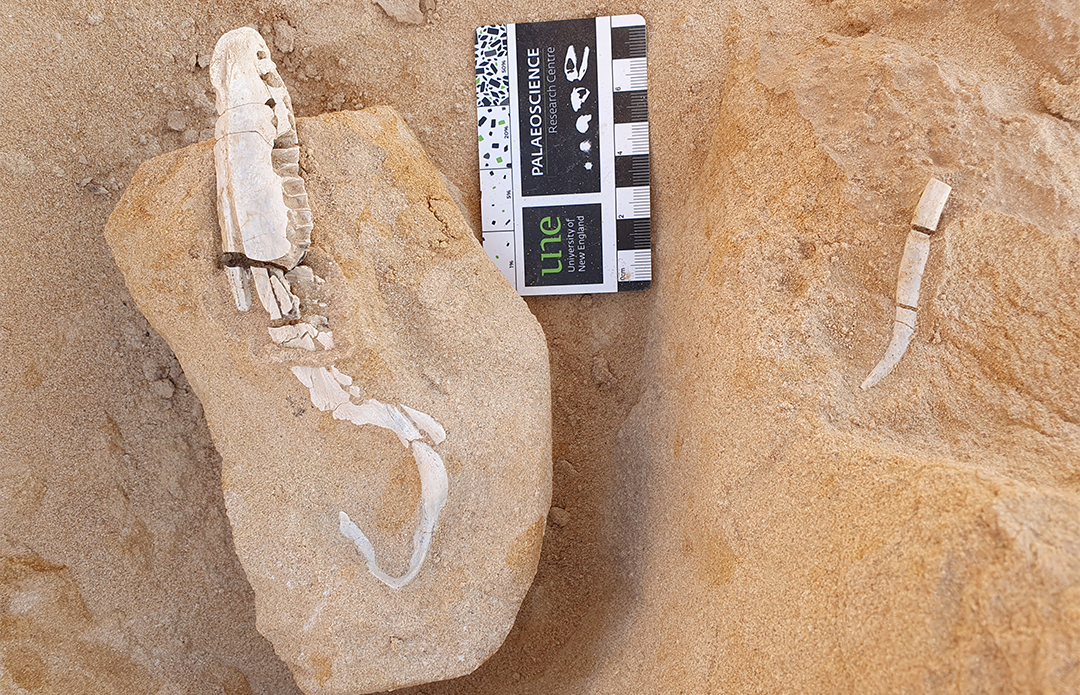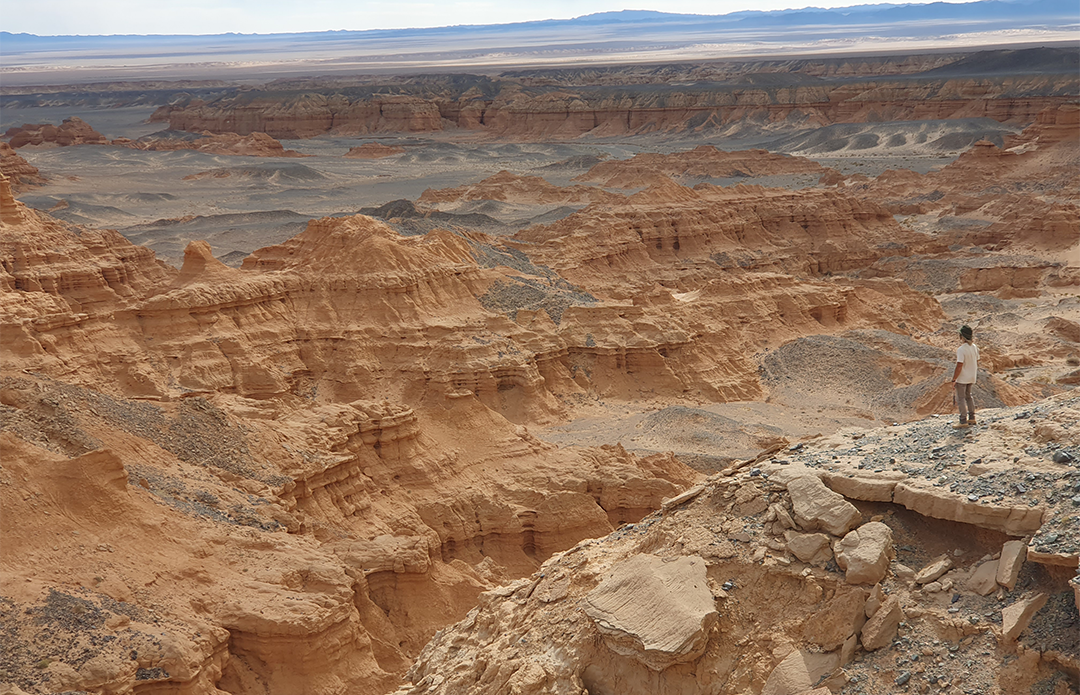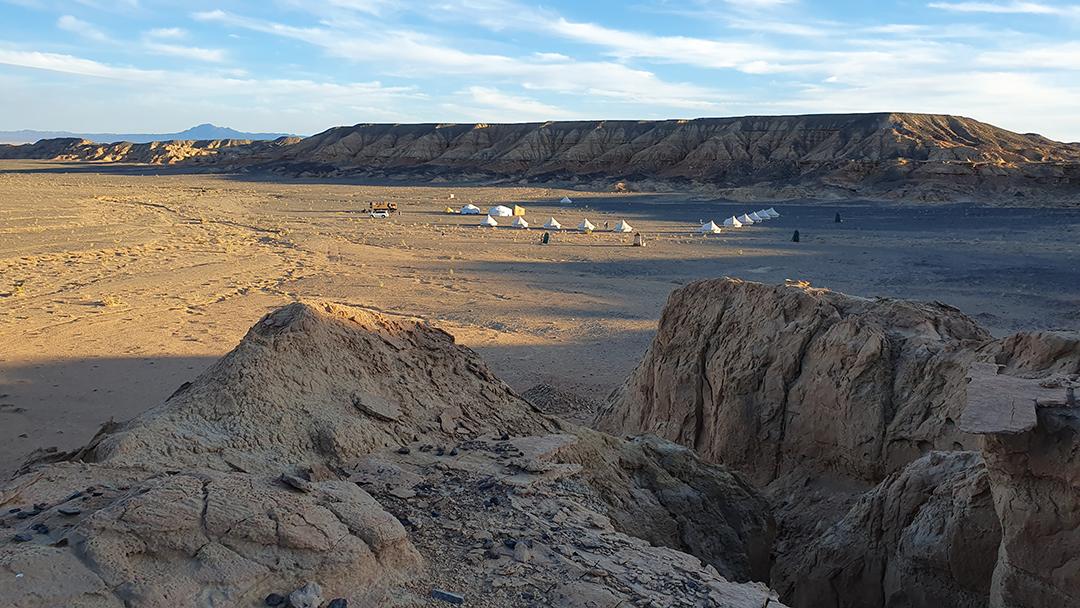The University of New England (UNE) is inviting amateur and seasoned palaeontologists on the trip of a lifetime to uncover the lost dinosaurs of Mongolia this September.
UNE palaeontologists, Associate Professor Phil Bell and Dr Nic Campione, will run a two-week expedition to the Gobi Desert, also known as the ‘dinosaur mecca’, to discover and collect dinosaur remains and assist in international efforts to counter the black-market trade of illegal fossils from Mongolia.
Run by world-class tour operator, Mongolia Quest, the expedition will involve the exploration of several remote pockets of the Gobi Desert, including the famous ‘Dinosaur Tomb’ of Altan Uul; the Toson Bumbat Mountains; Mongolia’s ‘Grand Canyon’, Khermyn Tsav; and Tugrigiin Shiree, best known as the place where scientists uncovered a fossil of a Protoceratops and a Velociraptor locked in combat.
Over the two weeks, attendees will have the opportunity to work with experts to discover, excavate, and collect new dinosaur finds, experience nomadic life and the rich historical heritage of the region, and help to piece together the puzzle of how Mongolia’s dinosaurs once lived.
“This will be an unforgettable experience for anyone out there with a love of dinosaurs and a sense of adventure,” says Associate Professor Phil Bell, who has led many similar expeditions across Mongolia, Canada, and Australia.
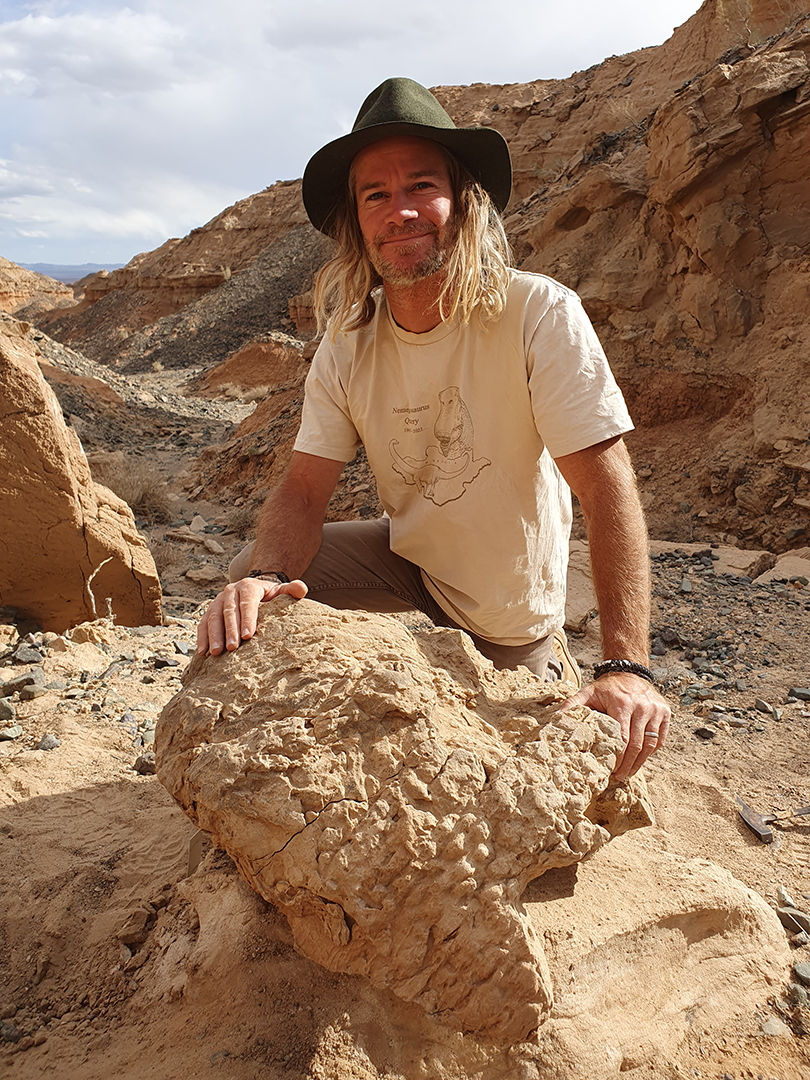
Image: A/Prof Bell during his last expedition to the Gobi Desert with a dinosaur foot covered in bumpy skin.
The Gobi Desert is renowned as one of the richest areas in the world for the discovery of dinosaur fossils, including the Velociraptor, Gallimimus, and Tarbosaurus.
“However, illegal fossil poaching has had a devastating impact on the region’s natural history heritage, and we’ve lost countless dinosaurs to these activities,” says A/Prof Bell.
“With this expedition, we’re hoping to restore lost locality and geological information for some of the specimens that have been repatriated and also find plenty of new things.”
Third year PhD student, Nathan Enriquez, recently embarked on a similar expedition to the Gobi Desert with A/Prof Bell and says the opportunity to visit the ‘Dragon’s Tomb’ was a career highlight.
“Skin preservation is traditionally patchy but here there are blocks of skin lying around everywhere, which was amazing to see in the field,” he says.
“It was the trip of a lifetime. Very few people get to visit this remote part of Mongolia and it’s something I will remember for the rest of my life.”
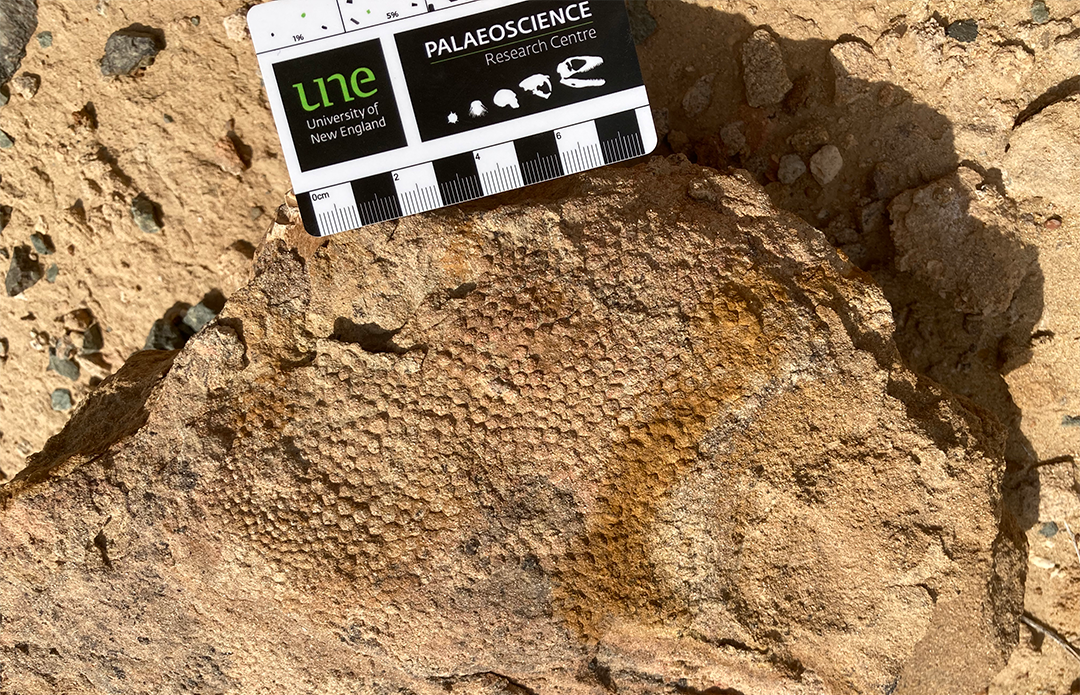
Image: Saurolophus skin at The Dragon's Tomb
Dr Nic Campione, Senior Lecturer in Palaeobiology and unit-coordinator of UNE’s highly coveted GEOL210 unit, Dinosaurs!,says the expedition will build on UNE’s efforts to make palaeontology accessible to all.
"Over the past decade, UNE has planted itself as a world-leading institution for palaeontological research, and since then we’ve made amazing strides in elevating palaeontological teaching,” he says.
“Palaeontology provides us with critical perspectives of Earth, life, and even time, and we are committed to making palaeontology accessible. So, whether you’re a student, a researcher, a dino nerd, or you just want to try something new, come help palaeontologists access new areas of the Gobi and understand it’s long-extinct dinosaur communities.”
The expedition will take place September 5th to 19th, 2024.
Find out more information, including the full itinerary, participation requirements and pricing, here.
Click through the photos below from A/Prof Bell's recent trip to the Gobi Desert for a taste of what to expect:

